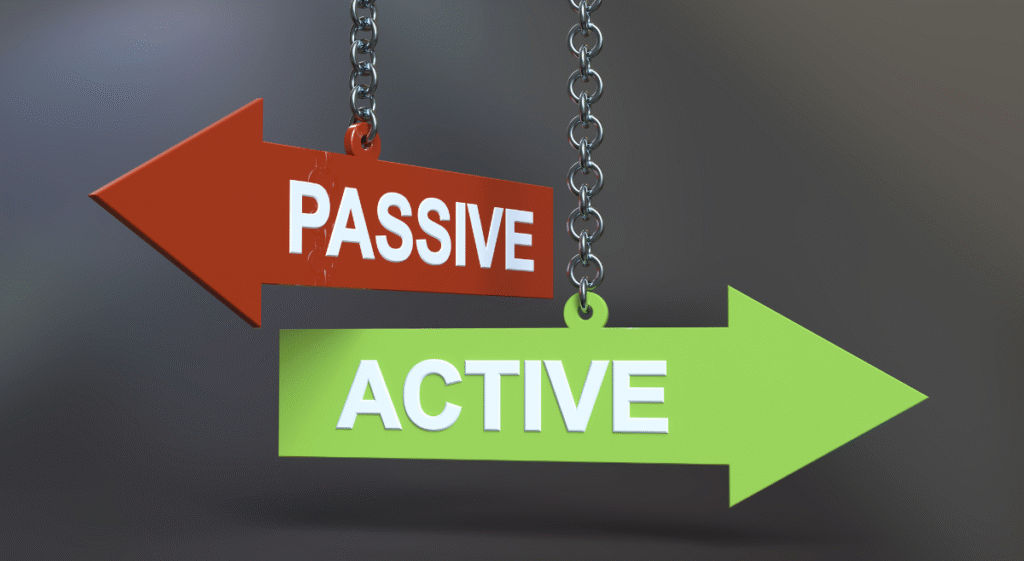Passive Income vs. Active Income Online
The way people earn money has changed dramatically in the digital age. Gone are the days when a 9-to-5 job was the only reliable source of income. Today, millions of Americans are exploring opportunities online to achieve financial freedom, supplement their salaries, or even replace traditional employment entirely.
One of the first decisions digital entrepreneurs face is choosing between passive income and active income online. Both have unique benefits, challenges, and levels of commitment, and the choice often depends on your personal goals, risk tolerance, and available time.
In this article, we’ll break down passive vs active income in a clear, practical way. You’ll discover:
- What each income model really means in the online world
- The pros and cons of both approaches
- Examples of popular income streams you can start today
- How to transition from active income to more sustainable passive income
- Tips to decide which path suits your lifestyle and career goals
Whether you’re a freelancer looking to scale your earnings, a stay-at-home parent seeking flexible opportunities, or someone aiming for long-term wealth, this guide will give you the clarity you need.
Ready to learn which income strategy can help you build the financial future you want? Let’s dive in.
Passive vs Active Income Online – Which One Fits Your Goals?
When exploring ways to earn money online, you’ll often come across two major paths: passive income and active income. While both can help you reach financial freedom, the way they function — and the type of work they require — are very different.
Here’s a simple breakdown:
- Passive Income: Money that continues to flow in with little to no daily involvement once the system or asset is set up. Think of it as “work now, earn later.”
- Active Income: Money earned in direct exchange for your time and effort. This is the “work now, earn now” approach.
Quick Comparison Table
| Factor | Passive Income | Active Income |
| Time Commitment | High upfront, low ongoing | Consistent ongoing effort |
| Scalability | High (can grow without limits) | Limited (time is the cap) |
| Risk Level | Medium to high (requires setup) | Low to medium |
| Example Online Sources | Blogging, affiliate marketing, digital products | Freelancing, consulting, virtual assistance |
Both paths can be profitable, but understanding the core differences will help you choose the right fit for your current stage of digital entrepreneurship.
Next, let’s take a closer look at passive income online and why so many people are drawn to it.
What Is Passive Income Online?

The term passive income is one of the most searched topics in the digital entrepreneurship world. But what does it really mean when applied to online business models?
At its core, passive income is money that continues to flow even when you’re not actively working on it every day. It doesn’t mean “zero effort,” but rather that the bulk of the work happens upfront — creating a system, product, or asset — which then generates ongoing revenue.
Key Characteristics of Passive Income
- Minimal Daily Involvement
- After the initial setup, your time commitment drops significantly.
- You focus more on maintaining or scaling than daily tasks.
- Scalability Potential
- A single product or system can serve thousands of people without requiring the same increase in effort.
- Example: Selling an online course that thousands can buy at once.
- Long-Term Earnings
- Passive streams often grow slowly but can eventually surpass active income sources.
Tip: The biggest misconception about passive income is that it’s instant money. In reality, it usually requires consistent effort upfront and smart systems to keep it running.
Common Online Passive Income Sources
- Affiliate Marketing
Earn commissions by promoting products or services. Once your content ranks or gains traction, sales can happen around the clock.
(Related post: How to Build a Profitable Affiliate Marketing Strategy) - Selling Digital Products
From ebooks and templates to online courses, digital products can be created once and sold repeatedly. - Blogging with Ad Revenue
By publishing valuable content and monetizing with ads (like Google AdSense), you can generate income long after the article is written.
(Related post: Why Blogging Is Still a Powerful Passive Income Source in 2025) - Dropshipping Automation
With the right tools, an online store can process orders without you manually handling products. - Investments in Digital Assets
Dividend-paying stocks, REITs, or even crypto staking fall under passive income if managed properly.
What Is Active Income Online?
While passive income often steals the spotlight, most digital entrepreneurs start with active income. It’s the foundation that allows you to earn money quickly while building skills and credibility in the online space.
Active income means you get paid directly for the work you perform. If you stop working, the income stops too. But unlike many passive models, it typically provides immediate and predictable cash flow — which can be crucial when starting out.
Key Characteristics of Active Income
- Direct Exchange of Time for Money
- You’re compensated based on hours worked, projects completed, or services delivered.
- Immediate Payouts
- Most clients or platforms pay shortly after the work is done.
- Skill-Dependent
- The more valuable your skills, the higher rates you can charge.
- Low Startup Barrier
- Often requires nothing more than your expertise, a laptop, and an internet connection.
Common Active Income Examples Online
- Freelancing
Offering services like writing, web design, social media management, or coding on platforms such as Upwork or Fiverr. - Consulting and Coaching
If you have specialized knowledge — marketing, fitness, career coaching — you can charge clients for one-on-one sessions. - Managing Online Services
Roles like SEO management, paid ads, or content creation for businesses. - Virtual Assistant Roles
Supporting entrepreneurs or small businesses with tasks like email management, scheduling, and customer support.
Key Insight: Active income is often the “entry ticket” into the digital world. Many successful entrepreneurs use it to fund and build their passive income streams later.
Now that we’ve defined both, let’s put them head-to-head and explore the pros and cons of passive vs active income so you can see where each shines.
Passive vs Active Income – Pros and Cons Side by Side

Disclosure: This post may contain affiliate links, meaning if you decide to make a purchase via my links, I may earn a commission at no additional cost to you.
Choosing between passive income and active income online isn’t about which one is “better” overall — it’s about which one matches your goals, resources, and lifestyle. To make this clear, let’s break down the strengths and weaknesses of both.
Advantages of Passive Income
- Financial Freedom Over Time
Once established, your income isn’t tied to hours worked. - Scalability Without Limits
A single product (like an online course or ebook) can generate thousands of sales with no extra effort. - Location Independence
You can earn while traveling, sleeping, or spending time with family. - Long-Term Wealth Potential
Some passive streams, like blogs or YouTube channels, can grow into six-figure businesses.
Downsides of Passive Income
- High Upfront Effort or Capital
Creating quality content, products, or systems takes time and sometimes money. - Delayed Results
Most passive income streams take months (sometimes years) before producing consistent revenue. - Ongoing Maintenance Still Required
Even “passive” systems need updates — think refreshing blog posts, updating courses, or monitoring ads.
Advantages of Active Income
- Immediate Payouts
You can start earning in days or weeks by offering freelance or consulting services. - Low Barrier to Entry
No need for big investments — often just a laptop, internet, and your skills. - Skill Development
Builds expertise you can later package into digital products or courses. - Predictable Cash Flow
Perfect for covering monthly expenses while building longer-term income streams.
Downsides of Active Income
- Income Stops When You Stop Working
No safety net if you need to take a break. - Limited Scalability
You can only take on so many clients or hours in a day. - Burnout Risk
Managing multiple projects or clients can become overwhelming. - Harder to Achieve Time Freedom
Success depends on being “present” to earn.
Quick Takeaway: Passive income is ideal for building long-term wealth and freedom, while active income provides fast, reliable earnings. Many digital entrepreneurs combine both for stability and growth.
Which One Is More Profitable? Passive vs Active Income Online
When deciding between passive vs active income, most people ask the same question: Which one makes more money?
The honest answer is: it depends on your strategy, effort, and timeline.
Short-Term Profitability
Active income usually wins in the short term. Why?
- You can land a freelance project, consulting gig, or online job and get paid within days or weeks.
- Cash flow is more predictable and immediate, which is crucial if you need to cover bills or replace a job quickly.
Long-Term Profitability
Passive income has the edge long-term.
- Once systems are in place (like a blog monetized with ads or a digital course), the income continues to grow without extra hours worked.
- Some passive income streams eventually outperform active ones by multiples.
Featured Snippet-Friendly Answer
Passive income often becomes more profitable in the long run, while active income usually delivers faster returns in the short term.
Real-World Example
- Freelancer (Active Income): Can earn $3,000 per month right away but must keep working every week.
- Blogger (Passive Income): May earn $0 for the first few months but eventually grow to $5,000+ per month with ads, affiliates, and digital products.
So, the best strategy isn’t picking one over the other — it’s combining both. Use active income to create financial stability while investing time (and some earnings) into building passive income streams.
Next, let’s explore how to transition from active to passive income online, which is the sweet spot for most digital entrepreneurs.
How to Transition from Active to Passive Income Online
For many digital entrepreneurs, the smartest approach isn’t choosing between passive vs active income, but learning how to gradually shift from active work to passive revenue streams. This balance provides both stability and long-term growth.
Here’s a practical roadmap:
Step 1 – Leverage Your Active Skills
Most people already have a skill they use to earn active income — like writing, design, coaching, or marketing.
- Example: A freelance copywriter can package their expertise into an ebook or online course.
- Why it works: You transform time-for-money skills into scalable digital products.
(Related: Top 10 Online Business Models for Beginners)
Step 2 – Automate and Outsource
You can’t build true passive income if you’re handling every detail.
- Use automation tools for email marketing, scheduling, and e-commerce.
- Outsource repetitive tasks like customer service, bookkeeping, or social media posting.
- Popular tools: Zapier, ConvertKit, Shopify apps.
Step 3 – Build Evergreen Digital Assets
Focus on creating resources that keep paying off. Examples include:
- Blogs monetized with AdSense or affiliate links
- Membership sites offering premium content
- YouTube channels with ad revenue and sponsorships
- Printable templates or software tools sold through online marketplaces
Related content:
- How to Pick a Profitable Niche in 2025
- How to Start a Digital Business From Scratch
- How to Validate Your Online Business Idea
- Online Coaching: How to Launch & Sell High-Ticket Offers
Step 4 – Reinvest Earnings into Passive Streams
As your active income grows, reinvest part of it into assets that compound returns.
- Buying traffic for your blog or online store
- Expanding your course library
- Investing in dividend stocks or crypto staking for additional passive flow
Pro Tip: Don’t quit active income too early. Use it as a springboard to fund your passive income projects until they become self-sustaining.
Passive vs Active Income – Which Is Right for You?
Now that you understand the differences, benefits, and challenges of passive vs active income, the big question is: Which one should you pursue first?
The truth is, the answer depends on your personality, goals, and current circumstances.
If You Thrive on Stability and Quick Results
- You may prefer active income.
- Perfect if you need to pay bills, support your family, or build confidence before taking bigger risks.
- Great fit for: freelancers, consultants, and those who enjoy hands-on work.
If You Value Freedom and Long-Term Growth
- Passive income could be your best bet.
- Ideal if you’re willing to invest time upfront for future freedom.
- Great fit for: bloggers, digital product creators, affiliate marketers, and YouTubers.
Key Factors to Consider
- Time Availability
- Limited time? Start with active income for immediate cash flow.
- Flexible schedule? Invest in passive projects.
- Risk Tolerance
- Prefer predictable earnings? Stick with active income.
- Comfortable with delayed results? Passive income pays off later.
- Income Goals
- Need money fast? Active income.
- Want to build wealth and independence? Passive income.
Most successful digital entrepreneurs combine both. Active income pays the bills now, while passive income builds the freedom to choose when and how you work.
Building Your Ideal Income Mix
The debate of passive vs active income online isn’t about picking a winner. Instead, it’s about understanding how each model fits into your financial journey.
- Active income delivers quick, reliable cash flow — perfect for covering expenses and building skills.
- Passive income requires upfront effort but paves the way to long-term freedom and scalability.
If you’re just starting out, use active income to stabilize your finances and gain experience. Then, channel part of those earnings into creating passive income streams that will keep paying you for years to come.
Remember: The most resilient digital entrepreneurs don’t rely on just one income stream — they build a hybrid approach for both security and freedom.
Ready to take the next step?
Start small: pick one active income source to fund your journey, and one passive income idea to build for the future. In a few months, you’ll thank yourself for starting today.
FAQs
1: Which is better: passive or active income online?
Neither is universally better. Active income provides faster returns, while passive income builds long-term wealth and freedom. Many combine both.
2: Can beginners really earn passive income online?
Yes, but it takes upfront work. Popular starting points include affiliate marketing, blogging, and selling digital products.
3: How long does it take to replace active income with passive income?
It depends on effort and strategy. Some see results in 6–12 months, while others take a few years to create stable, reliable streams.
Where to Learn These Skills
You don’t need to enroll in a 4-year program. Try:
- Coursera (certified programs from top universities)
- LinkedIn Learning
Many of these platforms offer certificates, practice projects, and eve

I’m Olivia Blake, the voice behind Job Boost 4U. I help people like you land better jobs and earn online with practical, honest tips.
Read more…





